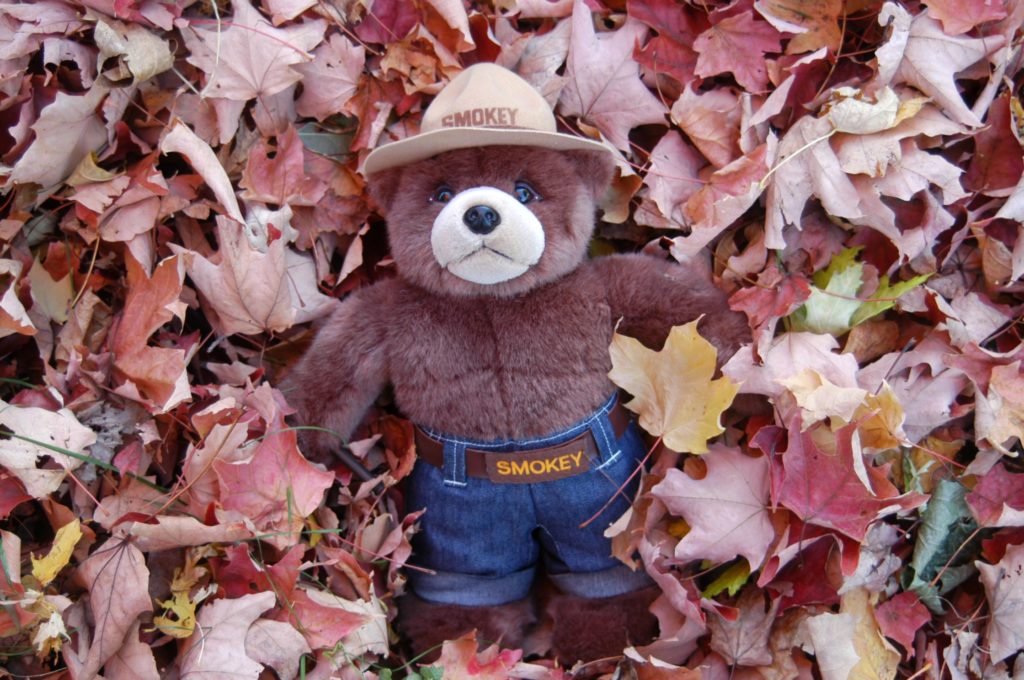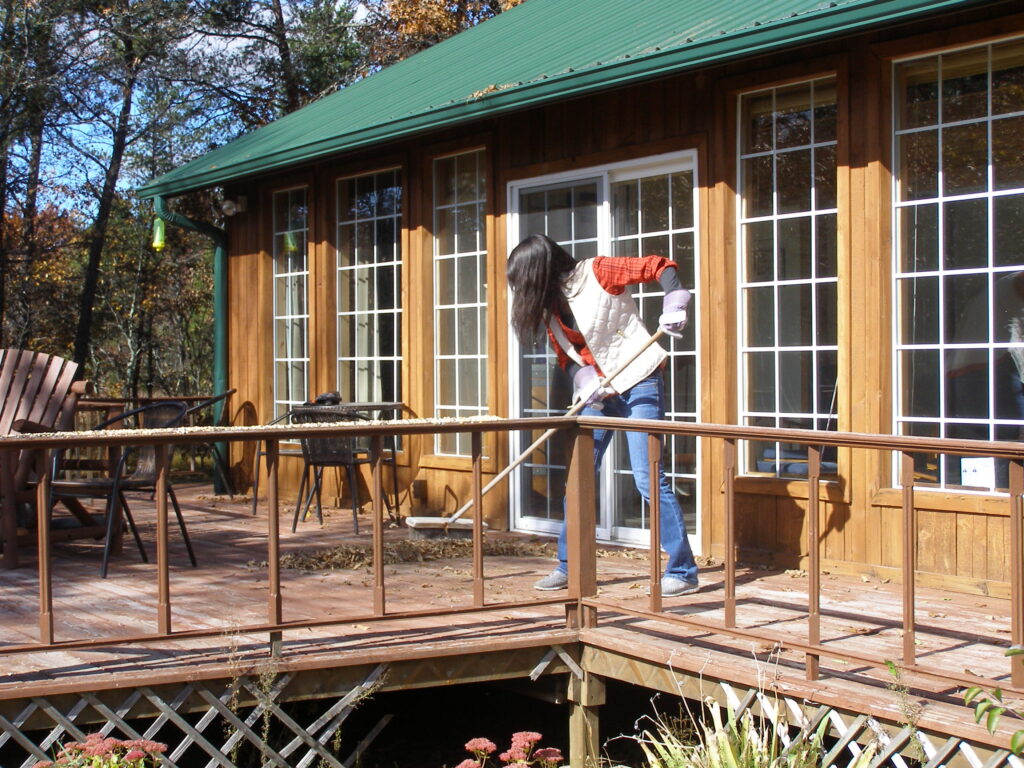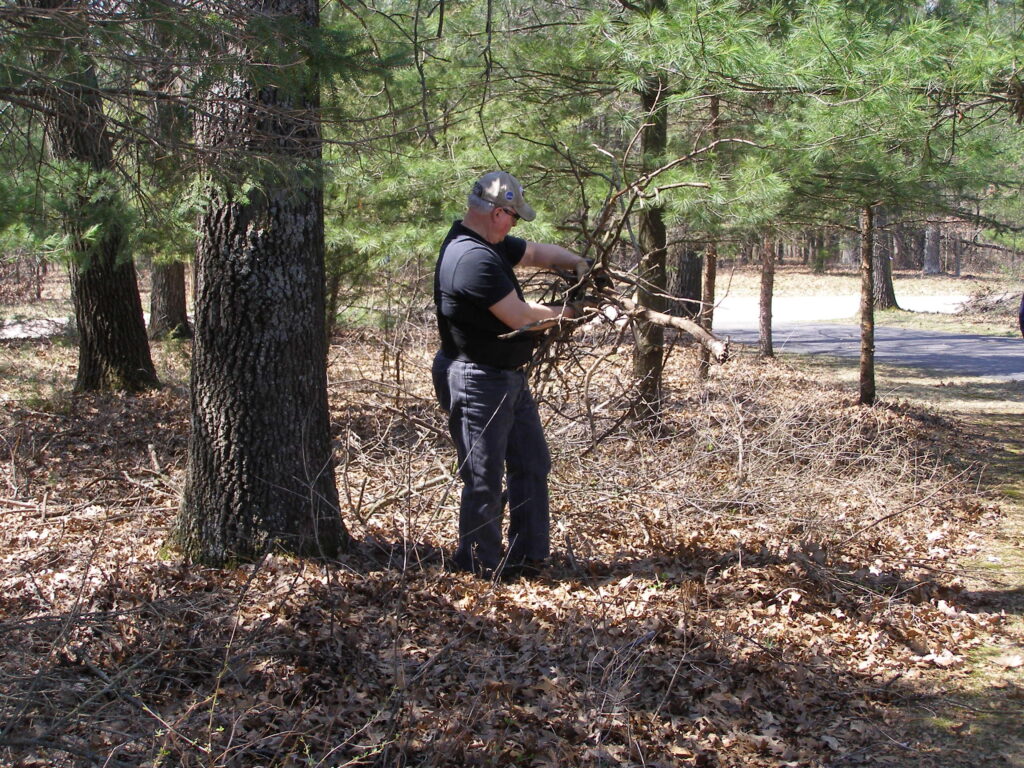When Leaves Fall, Fire Danger Rises
Fall is upon us. The leaves are turning colors and falling from the trees. Pines, spruce, and other evergreens are in the midst of their seasonal needle drop. Plants and grasses are going dormant, leaving only crispy brown remnants of what was their green, flowering summer glory. As the leaves fall, the risk of wildfires rises. Dry, windy conditions have resulted in nearly a dozen wildfires in the last week here in Wisconsin.
 Wildfires can occur any time of the year when the ground is not snow covered. Wildfires are more likely to start when people burn leaves and brush, leave campfires unattended, dump wood ash outdoors, or operate vehicles or equipment near wildland vegetation. Wildfires are more likely to spread when there is an abundance of dead vegetation around to carry the flames.
Wildfires can occur any time of the year when the ground is not snow covered. Wildfires are more likely to start when people burn leaves and brush, leave campfires unattended, dump wood ash outdoors, or operate vehicles or equipment near wildland vegetation. Wildfires are more likely to spread when there is an abundance of dead vegetation around to carry the flames.
In Wisconsin, the top causes of wildfires during the fall of the year are:
1. 27% Equipment (logging or farm machinery, vehicle exhaust or equipment sparks)
2. 25% Debris burning (burning brush, leaves, or trash in burn barrels or on the ground)
3. 9% Improper ash disposal (dumping wood ash from fireplaces, wood stoves, etc. outdoors)
4. 6% each – power lines and incendiary
5. 5% campfires

Keeping leaves swept off the deck reduces the amount of burnable wildland “fuel” next to your home or cabin.
Taking precautions anytime you use fire outdoors is your key to preventing wildfires and paying a hefty suppression bill should you start one. If you use a woodstove or fireplace for heating your home, either empty the ashes into a metal container with a tight-fitting lid or dump the ashes onto bare soil then drown the ash with water and stir until you’re sure no hot embers remain. The same goes for campfires, burn barrels and burned leaf and brush piles – before you leave the area, drown the ashes, stir, and keep adding water until all smoke is gone.
There are simple things property owners can do to protect their home or cabin from wildfire this fall and next spring when wildfire potential is at its greatest. Your “home ignition zone” is your home and its surroundings out to at least 100 feet (up to 200 feet if your home is surrounded by pine trees). Research has shown that the characteristics of buildings and their immediate surroundings determine the risk of them igniting during a wildfire.

Fall is a great time of year to gather fallen branches. Take the brush to a community collection site or create small piles for wildlife habitat.
What can you do?
Rake up or mow leaves and pine needles
Remove dead plant material from gardens
Remove fallen leaves and needles from rain gutters, off the roof, under decks, in window wells and any other place around the home where this debris collects
Prune evergreen tree branches up and away from the ground
Compost leaves and garden clippings instead of burning
Keep aware of the fire danger year-round by bookmarking the DNR’s fire Web page: dnr.wi.gov, search “fire”.
